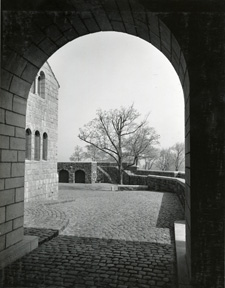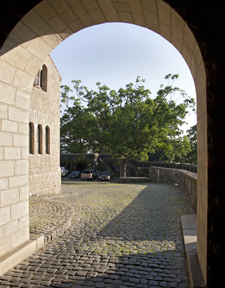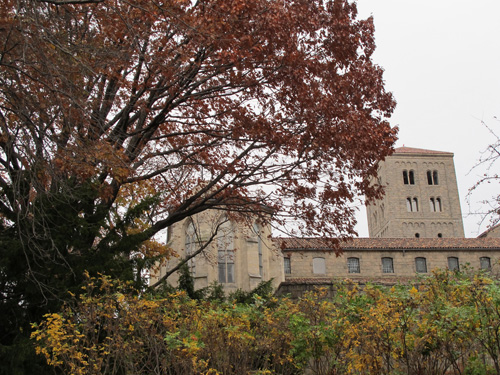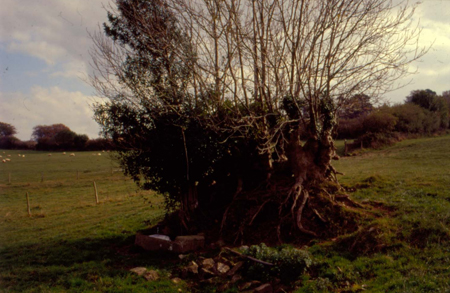Monday, July 16, 2012


The courtyard, as seen from the portcullis gate entrance in 1938, at left, and in 2012, at right. Photograph on right by Andrew Winslow
Visitors to The Cloisters may have spied the top of a large oak tree just above the wall at the postern gate entrance. This white oak grows in a courtyard enclosed by the ramparts, which also include maintenance passages, storage, an education workshop area, and garden workspaces.
Read more »
Tags: acorn, oak, Quercus, tree
Posted in Botany for Gardeners, Gardening at The Cloisters, Useful Plants | Comments (3)
Thursday, December 8, 2011

An Eastern black oak (Quercus velutina) outside The Cloisters.?? Photograph by Theo Margelony
Its wood is strong and hard and durable. Its beams supported high roofs over castles and churches. Its boards closed off doorways and gateways, denying passage to all but the most obstinate or determined, and were used to create interior floors from small chambers to large halls. Panels of it were shaped and carved into chests and choir stalls. Its planks were worked into ships and bridges, wagons and carts. Read more »
Tags: acorn, fructed, heraldry, oak, Quercus
Posted in Plants in Medieval Art | Comments (7)
Friday, March 4, 2011

Many relics of medieval woodland management techniques, such as this coppice stool, can be found in the British countryside.
Although evidence of medieval systems of woodland management can be found throughout Europe, the following post is based on studies of ancient British woodlands and their management, especially as discussed in the work of Dr. Oliver Rackham, an acknowledged authority in the field. Updated versions of many of Dr. Rackham’s older works have been revised and reprinted. His most recent book, Woodlands, was published in 2009. The term “ancient woodland” is used to designate areas that have been continuously wooded since at least 1600 and is thus applied to woodlands of medieval date.
Pollarding, a technique of woodland management discussed in last week’s post, afforded a valuable renewable resource. A pollarded tree was pruned back drastically at the top, above the browse line, in order to protect the crop from grazing animals in areas where livestock had access to the trees. Read more »
Tags: ash, coppice stool, coppicing, elder, hazel, hornbeam, lime, oak, pollard, pollarding, pruning, stool, timber, tree, understory, willow, woodbank, woodland
Posted in Medieval Agriculture | Comments (2)




